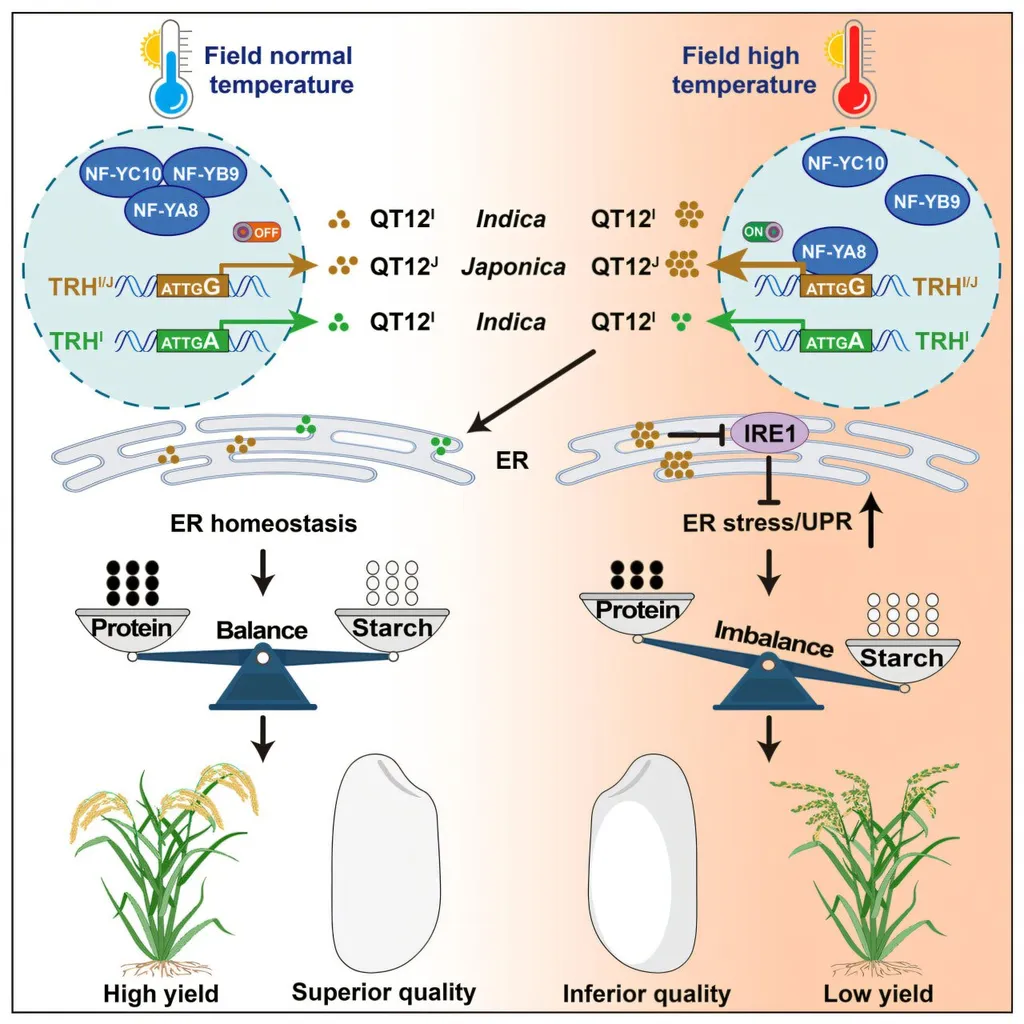In the heart of Tehran, at Shahid Beheshti University, a team of researchers led by Rahele Panahabadi has unlocked new genetic insights that could revolutionize rice production, a staple crop that feeds nearly half the world’s population. Their study, published in the journal *Agrosystems, Geosciences & Environment* (formerly known as *Agronomie*), leverages the power of genome-wide association studies (GWAS) to dissect the genetic underpinnings of rice yield components, offering promising avenues for genetic improvement.
Rice, a crop with a complex genetic architecture, has long been a challenge for breeders aiming to enhance yield. Panahabadi and her team tackled this challenge head-on, analyzing 33,839 single nucleotide polymorphisms (SNPs) across 219 rice accessions. Their high-throughput phenotyping provided a treasure trove of data on traits such as grain weight, plant height, panicle length, and more. The results were striking: 55 significant quantitative trait loci (QTLs) were identified, tagged to 97 SNPs, scattered across all 12 rice chromosomes.
The study not only confirmed the role of well-known genes, like SD1 for plant height but also validated several recently reported genes. “We found that genes like the monosaccharide transporter 1 and nitrate transporter NTL1, both associated with grain weight, play a crucial role in yield components,” Panahabadi explained. Moreover, the team identified novel candidate genes, including those from the glycoside hydrolase family, associated with tiller number, and growth-regulating factor 7, linked to plant height and flag leaf length.
The implications of this research are profound for the agritech industry and the energy sector. Rice production is not just about food security; it’s also about energy security. Rice husks, for instance, are a significant source of biomass energy. Enhancing yield and improving plant architecture can lead to more efficient biomass production, contributing to a sustainable energy future.
The identification of transcription factors for various traits opens new doors for precision breeding. “Our findings provide a genetic roadmap for breeders to develop high-yielding rice varieties that are better adapted to changing climates and farming practices,” Panahabadi noted. This could lead to more resilient crops, reducing the need for chemical inputs and enhancing sustainability.
As the global population continues to grow, the demand for food and energy will escalate. This research offers a beacon of hope, demonstrating how cutting-edge genomic tools can drive agricultural innovation. By harnessing the power of GWAS, breeders can accelerate the development of high-yielding, climate-resilient rice varieties, ensuring food security and contributing to a sustainable energy future.
The study by Panahabadi and her team is a testament to the power of genetic research in shaping the future of agriculture. As we stand on the brink of a new agricultural revolution, their work serves as a reminder that the answers to some of our most pressing challenges lie within the very fabric of life itself. The journey towards sustainable agriculture and energy security is long and complex, but with each genetic discovery, we take one step closer to a brighter, more resilient future.

